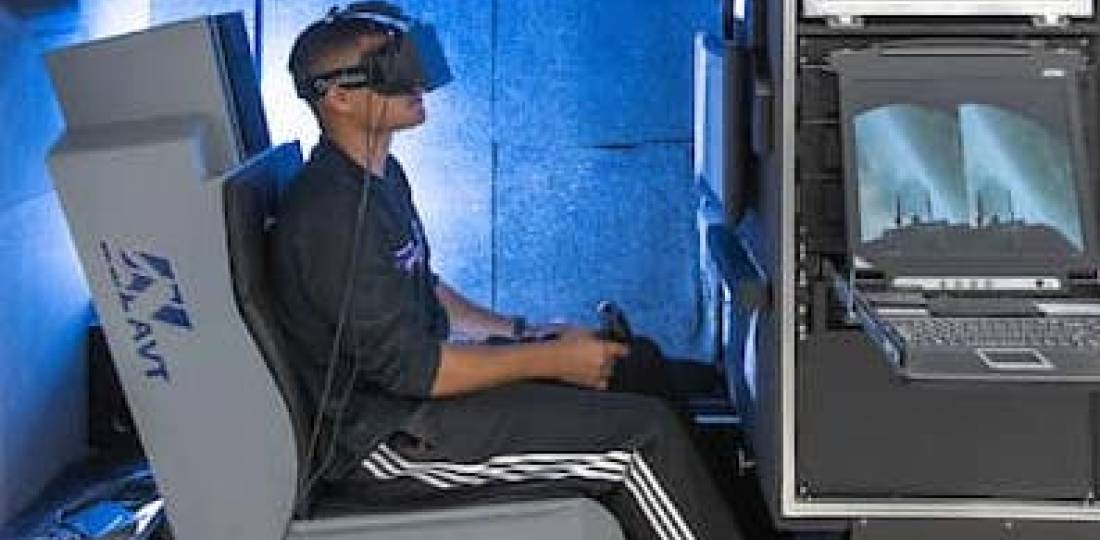Virtual reality helps people with hoarding disorder practice decluttering
SOURCE: HTTPS://WWW.SCIENCEDAILY.COM/
OCT 16, 2023
ERAU Finding Early Successes with VR Training
SOURCE: AINONLINE.COM
APR 18, 2022

Embry-Riddle Aeronautical University's (ERAU) virtual reality-based initiative, introduced six months ago for its flight training program, is already yielding results in terms of training time, costs, student preparedness, and confidence. Speaking during the recent Air Charter Safety Foundation Safety Symposium, ERAU College of Aviation assistant dean and chairman of the flight training department Ken Byrnes said early results of the university’s use of virtual reality (VR) in its flight training curriculum have shown a 28 percent decrease in training time to solo. In addition, the cost of initial training completions that incorporate the use of VR has been 18 percent less than the median for a private pilot course.
The university has also found that students who have already undergone the VR training are “very prepared” for flight, have significantly better radio communications skills, and have much lower anxiety as they begin training, which Brynes noted is an important factor in the student’s receptivity to instruction.
After years of “dabbling” with VR, Embry-Riddle rolled out its formal PILOT (Pre-flight Immersion Laboratory Operations Training) curriculum on August 28. Noting how the university has continued to increase in size, Byrnes said it also “continues to expand what we do and how we do it, how we do it safely, and how we build the next generation of aviation professionals.”
He noted that more students are interested in flight training, but the university needed to consider how it could accommodate that demand while improving efficiency and managing the increasing costs of aircraft and flight training.
The difficulty in managing that, he explained, is the variability that comes with flight training. Some students can be prepared in 50 hours and others 100. The national average is about 70 hours he noted. This variability is not only based on the student’s capacity, but many other factors, such as weather, maintenance, aircraft availability, healthy situations, and “many things that you can’t control,” Byrnes said.
He added that ERAU looked at how it could use technology “to really bridge the gap and give the students an extremely strong foundation in everything that they need to know in order to be a private pilot before they go to the airplane.”
University officials contemplated “how much can we give our students before they get to that airplane and prepare so they are not learning something for the first time at three or four dollars a minute. It makes a big difference.”
The school looked at VR as a means of “taking some of the variables we can't control and controlling them.” He added the hope is for students to be successful soon, meet their benchmarks sooner, have increased preparation for training, and an overall decrease in the time it takes them to completion.
Embry-Riddle has always used simulation as much as possible, including Level 6 flight training devices, he noted. The university is continuing its use and maintaining its building-block approach. Students learn concepts, then they go to the simulator to work through a maneuver.
Now, they also go to the VR trainer and practice that maneuver on their own in a realistic scenario. “We can increase task exposure and repetition at almost no cost,” Byrnes said, adding students can repeat these tasks in the trainer rather than having to go over them numerous times in an airplane.
VR is also used for preflight checklists and air traffic control communications training. Byrnes said students are much bettered prepared in working with ATC in the aircraft once they’ve practiced in the VR training.
The ATC practice is particularly important because such communications can be daunting for students flying through the busy Daytona Beach airspace for the first time.
“The results are thus far good,” Brynes surmised about the VR training. “We continue to tweak it. We keep making it better.”
LATEST NEWS
WHAT'S TRENDING


Data Science
5 Imaginative Data Science Projects That Can Make Your Portfolio Stand Out
OCT 05, 2022

SOURCE: HTTPS://WWW.SCIENCEDAILY.COM/
OCT 16, 2023
SOURCE: HTTPS://WWW.SCIENCEDAILY.COM/
OCT 16, 2023
SOURCE: HTTPS://WWW.MOBIHEALTHNEWS.COM/
AUG 28, 2023
SOURCE: HTTPS://WWW.SCIENCEDAILY.COM/
AUG 07, 2023
SOURCE: HTTPS://WWW.SCIENCEDAILY.COM/
JUL 14, 2023
SOURCE: HTTPS://WWW.SCIENCEDAILY.COM/
JUL 13, 2023
SOURCE: HTTPS://WWW.ANALYTICSINSIGHT.NET/
JUN 21, 2023